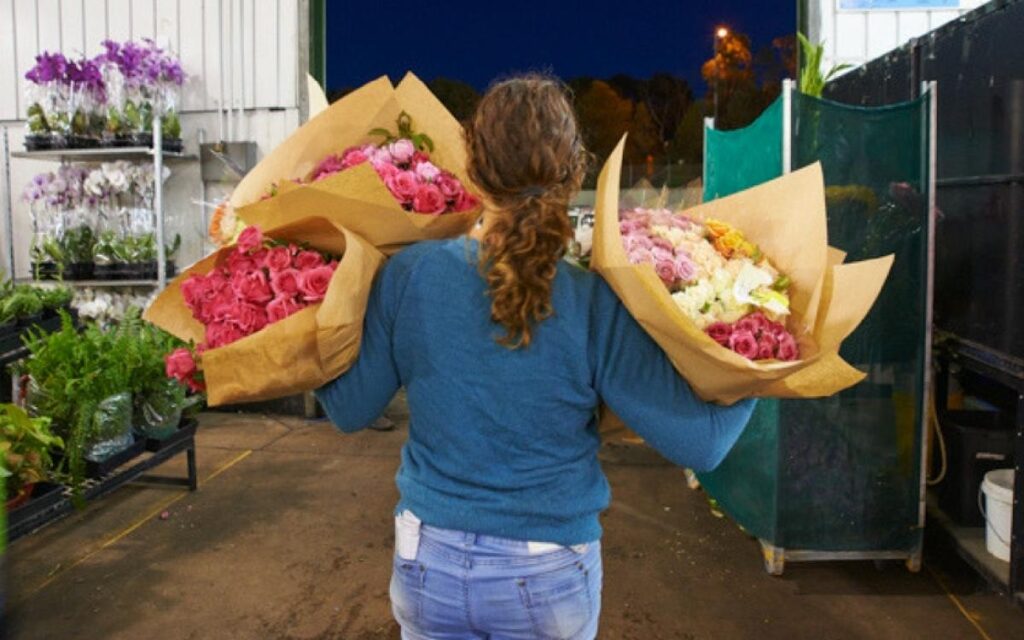Mother’s Day is a special occasion that gives us an opportunity to express our love and gratitude for the incredible women in our lives. While there are many ways to show appreciation, one timeless tradition stands out: giving flowers. The act of gifting flowers on Mother’s Day holds immense emotional power, allowing us to convey our feelings in a way that words may often fail to do. Let’s explore the symbolism, emotional impact, tradition, and significance of choosing the perfect bouquet for this special day.
Understanding the Symbolism of Flowers
Flowers have long been associated with profound symbolism that transcends cultural boundaries. Throughout history, different cultures have assigned meanings to mothers day flowers, giving rise to the language of flowers. This language conveys emotions and messages through the arrangement and selection of specific blooms.
The Language of Flowers: A Historical Perspective
In ancient times, flowers were used to communicate hidden messages, especially in societies where open expressions of emotions were frowned upon. The Victorians, for example, developed an elaborate system of flower symbolism, using different blooms to express sentiments of love, friendship, gratitude, and even sorrow.
Imagine a Victorian gentleman, deeply in love but unable to openly express his feelings to the woman of his dreams. In a gesture of romantic longing, he would carefully select a bouquet of red roses, each bloom representing a burning passion that words alone could not convey. The woman, upon receiving the bouquet, would understand the depth of his affection without a single word being spoken. Learn more how to elevate mother’s day with a gorgeous bouquet of flowers.

Common Flowers and Their Meanings
Understanding the meanings behind different flowers allows us to choose blooms that convey the intended emotions. For instance, roses are widely recognized as a symbol of love and passion, while lilies represent purity and remembrance. Sunflowers signify happiness, and tulips symbolize perfect love. By selecting flowers with specific meanings, we can better express our emotions through this traditional gift.
Let’s take a closer look at the tulip, a flower that has captured the hearts of many throughout history. Originating from Persia, the tulip has been associated with various meanings over time. In the Victorian era, red tulips symbolized a declaration of love, while yellow tulips represented unrequited love. Today, tulips are often given as a gesture of perfect love, making them a popular choice for anniversaries and romantic occasions.
The Emotional Impact of Giving Flowers
Why is giving flowers such a powerful emotional gesture? Psychologists suggest that the act of giving flowers taps into our fundamental need for connection and affection. Flowers have a unique way of touching the heart, evoking positive emotions and memories.
The Psychology Behind Flower-Giving
Studies have shown that receiving flowers can have a profound effect on a person’s mood, creating feelings of happiness, gratitude, and surprise. Additionally, the act of giving flowers can boost the giver’s own well-being by promoting feelings of satisfaction and positive social connections. The psychological impact of this simple gesture extends beyond the immediate moment, leaving a lasting impression on both the recipient and the sender.
Flowers as a Medium of Emotional Expression
Flowers possess a unique ability to convey emotions that may be challenging to express verbally. Whether it’s love, appreciation, admiration, or sympathy, the vibrant colors, delicate petals, and intoxicating fragrance of flowers can communicate deep sentiments in a way that words cannot always capture. They offer a tangible and visual representation of our emotions, leaving a lasting memory of the love and affection we feel.
Furthermore, the impact of giving flowers goes beyond the immediate emotional response. When someone receives a bouquet of flowers, they often take the time to arrange them in a vase, carefully selecting the perfect spot to display them. This act of arranging the flowers can be a therapeutic and meditative experience, allowing the recipient to fully immerse themselves in the beauty and fragrance of the blooms. It becomes a moment of self-care, a pause in the busyness of life to appreciate the simple joys that nature provides.
Moreover, the presence of flowers in our surroundings can have a lasting impact on our overall well-being. Research has shown that being in the presence of flowers can reduce stress levels and increase feelings of calmness and relaxation. The vibrant colors and natural beauty of flowers can create a soothing and uplifting atmosphere, transforming any space into a sanctuary of tranquility.

The Tradition of Mother’s Day Flowers
When did the tradition of gifting flowers on Mother’s Day begin? Exploring the origins of this practice can help us understand its significance and relevance today.
Origins of the Mother’s Day Flower Tradition
The tradition of giving flowers on Mother’s Day can be traced back to ancient celebrations honoring motherhood. In more recent times, the modern Mother’s Day holiday, as we know it today, was established by Anna Jarvis in the early 20th century as a way to honor and remember her own mother.
But let’s delve deeper into the fascinating history of this tradition. Ancient civilizations, such as the Greeks and Romans, held festivals to honor mother goddesses like Rhea and Cybele. These festivals involved offerings of flowers and other gifts to express gratitude for the nurturing qualities associated with motherhood.
In the 17th century, Mothering Sunday emerged in England as a Christian holiday. On this day, people would return to their “mother church” and often bring flowers as a token of appreciation for their mothers. This practice eventually evolved into a more secular celebration, where children would present their mothers with small gifts and flowers.
Modern Interpretations and Practices
Today, giving flowers on Mother’s Day has become a widely cherished tradition. It is a way to express gratitude and love for the countless sacrifices mothers make. Whether it’s a single stem or an extravagant bouquet, the act of presenting flowers serves as a symbolic gesture of appreciation and acknowledges the immeasurable contributions of mothers in our lives.
As the tradition has evolved, different flowers have come to represent different sentiments. For example, carnations are often associated with Mother’s Day, with pink ones symbolizing gratitude and love, while white ones represent purity and remembrance. Other popular choices include roses, lilies, and tulips, each carrying its own symbolic meaning.
In addition to flowers, many people also choose to accompany their floral gifts with heartfelt cards or handwritten notes. These personal messages allow individuals to express their deepest emotions and convey their appreciation for their mothers in a more intimate way.
Furthermore, the tradition of giving flowers on Mother’s Day has expanded beyond biological mothers. It now encompasses all maternal figures, including stepmothers, grandmothers, aunts, and other women who have played a nurturing role in someone’s life. This inclusive approach reflects the diverse and unique relationships we have with the maternal figures who have shaped us.
So, as Mother’s Day approaches, let us remember the rich history behind the tradition of gifting flowers. It is not merely a gesture of beauty, but a profound symbol of gratitude and love for the remarkable women who have nurtured us throughout our lives.

Choosing the Perfect Mother’s Day Bouquet
When selecting a bouquet for Mother’s Day, there are several factors to consider to ensure that the arrangement reflects the intended emotions and sentiments.
One important factor to consider when choosing flowers for Mother’s Day is your mother’s personal preferences. Does she have a favorite flower or color? Taking these preferences into account will show that you have put thought into selecting a bouquet that she will truly appreciate. Additionally, consider the symbolism behind specific blooms. For example, roses are often associated with love and admiration, while lilies symbolize purity and beauty. By choosing flowers that hold special meanings, you can add an extra layer of sentiment to your gift.
Factors to Consider When Choosing Flowers
Consider your mother’s personal preferences, her favorite colors, and the symbolism behind specific blooms. Additionally, take into account the significance of the occasion and the message you want to convey. Are you celebrating her unconditional love or expressing appreciation for her guidance and support? Each flower holds its own meaning, so choose thoughtfully to create a truly meaningful gift.
Another tip for creating a meaningful bouquet is to incorporate a variety of flowers. By blending different colors and textures, you can add depth and visual interest to the arrangement. This will not only make the bouquet more visually stunning but also reflect the unique beauty of your relationship with your mother. Consider including a mix of bold and delicate blooms to create a balanced and captivating composition.
Tips for Creating a Meaningful Bouquet
When assembling a bouquet, consider incorporating a variety of flowers to add depth and visual interest. Blend different colors and textures to create a stunning arrangement that reflects the unique beauty of your relationship with your mother. Add thoughtful touches like including her favorite flower or incorporating blooms that hold personal significance. These personalized details will make the bouquet even more special.
Lastly, don’t forget to add a heartfelt note or card to accompany the bouquet. Take a moment to express your love and gratitude for everything your mother has done for you. A few sincere words can make the gift even more meaningful and show your mother just how much she is cherished.
The Lasting Impact of Floral Gifts
Mother’s Day flowers have a remarkable ability to leave a lasting impact on both the recipient and the giver.
Flowers as a Reminder of Love and Appreciation
A beautiful bouquet of flowers acts as a constant reminder of the love, appreciation, and gratitude we feel for our mothers. Whenever she sees the blooms, she is reminded of the special bond and the cherished memories shared. This visual reminder can uplift spirits, provide comfort, and reignite feelings of love and warmth.
The Long-Term Emotional Benefits of Receiving Flowers
Studies have shown that receiving flowers can have a lasting positive effect on a person’s mood and overall well-being. The presence of flowers in the home can create a sense of calm, reduce stress, and promote emotional healing. The gift of flowers is not simply fleeting; it continues to provide emotional benefits long after the initial exchange.
Imagine walking into a room filled with the delicate fragrance of fresh flowers. The scent wafts through the air, instantly transporting you to a place of tranquility and beauty. The vibrant colors and intricate petal formations captivate your senses, creating a sensory experience that brings joy and serenity. Each flower has its own unique story to tell, a story that unfolds with every glance.
Furthermore, the act of receiving flowers can spark a sense of wonder and curiosity. As you examine each bloom, you may find yourself marveling at the intricate details of nature’s design. From the delicate veins on a rose petal to the vibrant hues of a tulip, each flower holds a world of beauty waiting to be explored.
In conclusion, the act of giving Mother’s Day flowers goes beyond a mere gesture. It is a powerful means of expressing emotions, gratitude, and love. By understanding the symbolism of flowers, recognizing the emotional impact of flower-giving, embracing the tradition, and carefully selecting a meaningful bouquet, we can truly harness the power of these floral tokens of love. So, this Mother’s Day, let the language of flowers speak on your behalf and create a lasting impression in celebrating the incredible women who have shaped our lives.
